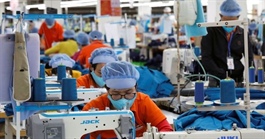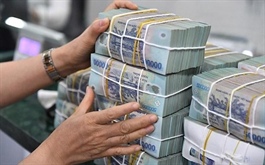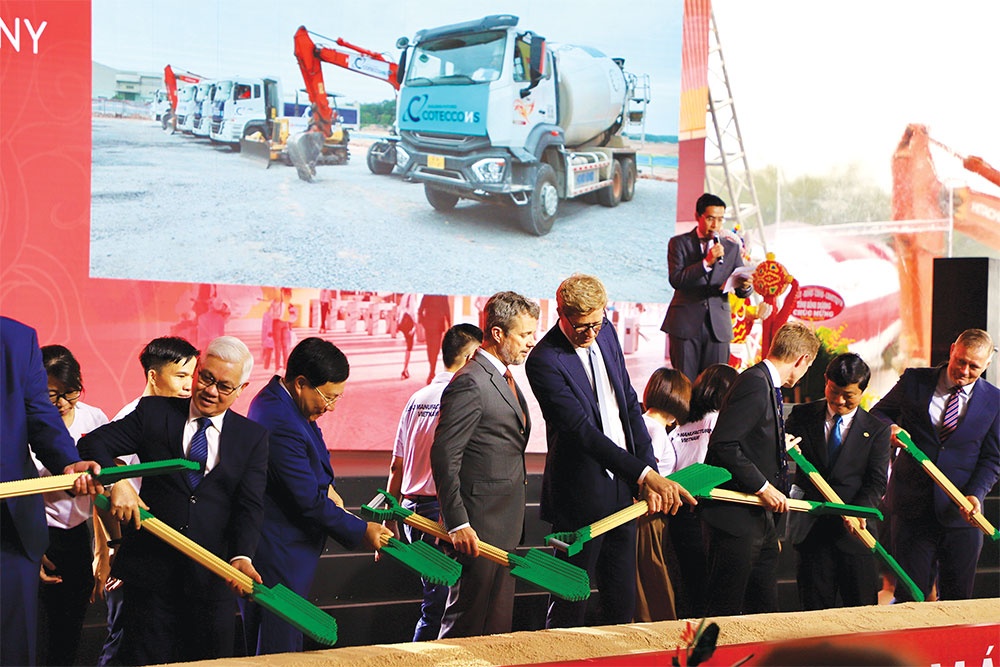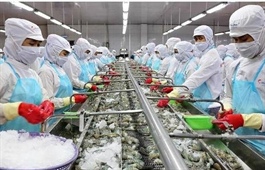Acceleration sought for socioeconomic recovery
Acceleration sought for socioeconomic recovery
The national Plan on Socioeconomic Development next year may not reach its desired growth goal if risks continue lingering and the country’s hallmark scheme on recovery keeps its existing slow pace in implementation.
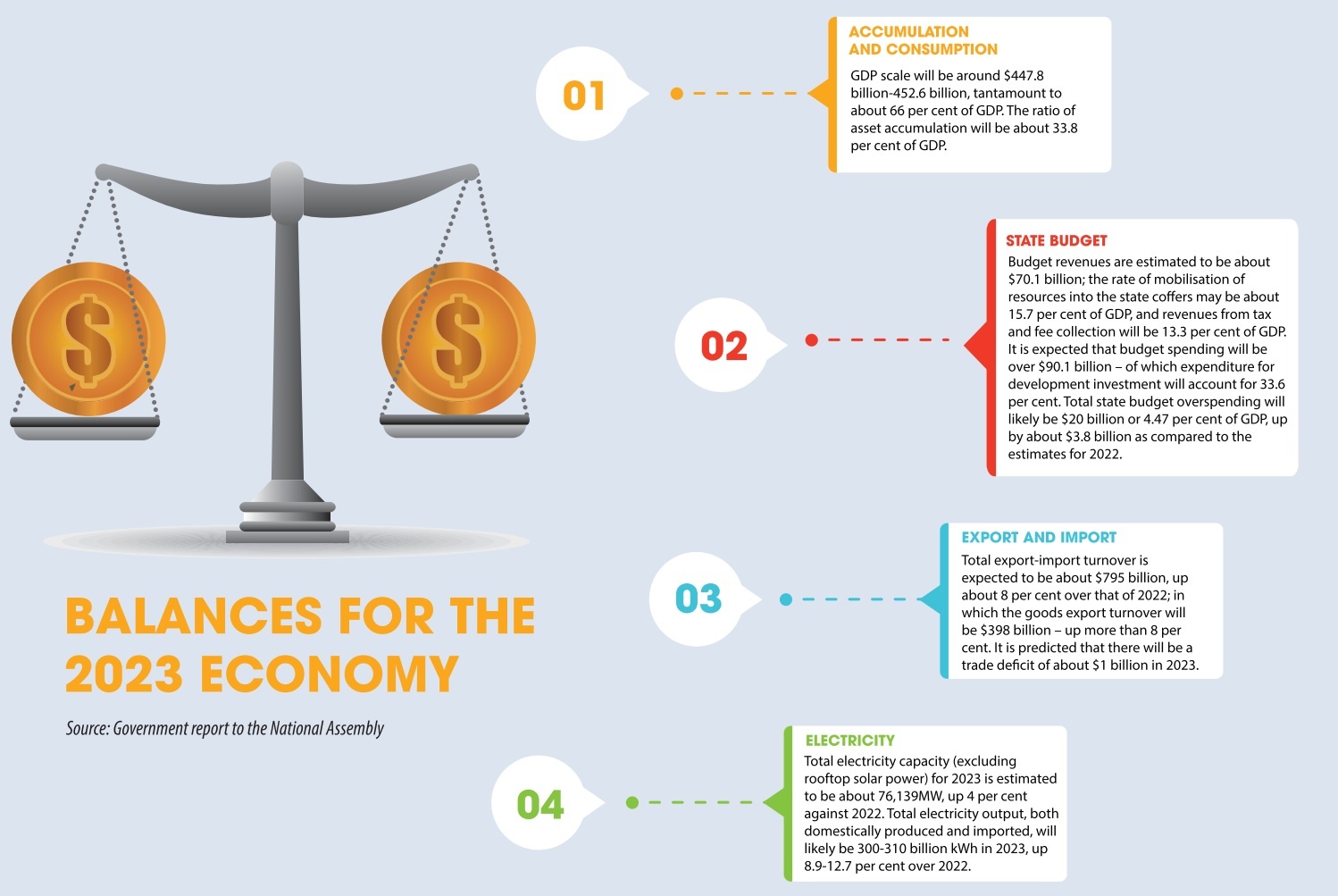
The National Assembly (NA) last week adopted a resolution on the country’s Plan on Socioeconomic Development for 2023 which had been under intensive discussions by lawmakers based on the existing situation and forecasts of internal and external developments, especially global ongoing geopolitical tensions that may dent the nation’s efforts to achieve its desired goals.
Under the resolution, the GDP growth is set to be 6.5 per cent – lower than this year’s 8 per cent in expectation, while per capita income will be $4,400 – higher than this year’s expected $4,075. The ratio of manufacturing and processing in GDP will be 25.4-25.8 per cent.
According to the government, though the growth target of 6.5 per cent for 2023 has been set, it may be impacted by numerous risks currently happening in the economy and in the global market.
“Disadvantages that can affect Vietnam’s economic growth in 2023 are colossal, with massive difficulties which can happen rapidly. They will have comprehensive negative impacts on the whole economy, especially fluctuations in prices of fuel and input materials – and this will greatly pressurise domestic production and inflation, with expected hikes in production costs,” read a government report sent to the National Assembly Standing Committee (NASC).
“There will be big continued risks in supply chains with a fall in demands from Vietnam’s traditional and major export markets. This will also make it difficult for formulating exact policy forecasts.”
Minister of Planning and Investment Nguyen Chi Dung said, “With the Vietnamese economy boasting its big openness to and integration into the global economy – trade values nearly doubling GDP, and with unpredictable risks and uncertainties, it is forecasted that the economy will continue facing numerous challenges.”
According to the General Statistics Office, Vietnam’s total export-import turnover last year was $668.54 billion, or 1.81 times higher than GDP of $368.68 billion. Total export-import revenue hit $336.31 billion and $332.23 billion, up 19 and 26.5 per cent on-year, respectively.
“We are seeing plenty of risks, but the biggest will still come from outside, meaning external shocks may continue affecting the Vietnamese economy. Currently, the resilience of the economy is relatively good,” said Nguyen Minh Cuong, principal country economist at the Asian Development Bank. “However, the slow implementation of the national Programme on Socioeconomic Recovery and Development (PSRD) will affect economic growth next year as enterprises are now in critical need of support.”
The Vietnamese government and the NA have voiced their worries that it has been more than 10 months since the PSRD was enacted, but much of the $15 billion support package remains on the table.
“In public investment disbursement and deployment of the PSRD and three national target programmes – new rural development, socioeconomic development in remote and mountainous areas, and poverty reduction – it is estimated that disbursement of state capital since early this year hit $12.95 billion out of the total $25.21 billion assigned,” Prime Minister Pham Minh Chinh reported to the NA. “This increases 15.7 per cent from the same period last year, with some initial results reaped.”
However, the planned capital that must be disbursed from now to the year’s end is substantial, at $12.26 billion, of which 30.5 per cent is for ministries and central agencies, and the remainder for localities, PM Chinh said. “About 8.3 per cent of the PSRD’s total capital for 2022 has yet to be allocated, and the implementation of some policies, including a 2 per cent lending rate support scheme, remains very slow.”
Chairman of the National Assembly Economic Committee (NAEC), Vu Hong Thanh, said that the PSRD had been “implemented at a very slow pace.”
“All national target programmes and tasks to implement the fiscal and monetary policy in service of the PSRD are being deployed slowly, with important policies being just in the stage of drafting guidance and have yet to be put in practice. These include lending rate support policies for enterprises and the large-scale programme on providing computers for pupils, among many others,” he said.
According to the NAEC, the rate of disbursement of the policies under the PSRD is at a relatively low rate of 20 per cent or VND61 trillion ($2.65 billion) of the programme’s total capital as of late September. Moreover, disbursement of the infrastructure development package has also been slow – specifically, it was not until late August that the government submitted to the NASC report on investment portfolio and capital quotas for projects and tasks within the programme.
In another case, the 2 per cent lending rate support scheme within the PSRD via the commercial bank system has seen a very low disbursement rate – at only about $587,000 out of $697 million allocated to 2022. The total value of this package is $1.74 billion for 2022-2023.
The PSRD was crafted to support businesses and individuals still from pandemic shocks. On a macro-view, it is expected to enable the economy to achieve a higher level of growth – at 6.5-7 per cent in the 2021-2025 period.
The programme covers five key components, including re-opening the economy pertaining to enhancing medical capacity, and pandemic prevention and control ($2.6 billion); ensuring social welfare and employment ($2.31 billion); assisting enterprises’ recovery, cooperatives and business households ($4.78 billion); developing infrastructure ($4.95 billion); increasing institutional and administrative reform, and improving the investment climate.
Moreover, another $434.8 million will be mobilised from non-state budget financial funds. Under the programme, VAT for applicable goods and services has been reduced to 8 per cent, excluding that for goods and services in the sectors of telecommunications, IT, finance and banking, insurance, stock, real estate business, metal production and mining industries (except coal), coke production, petroleum, chemicals, and commodities and services that are subject to special consumption tax.








